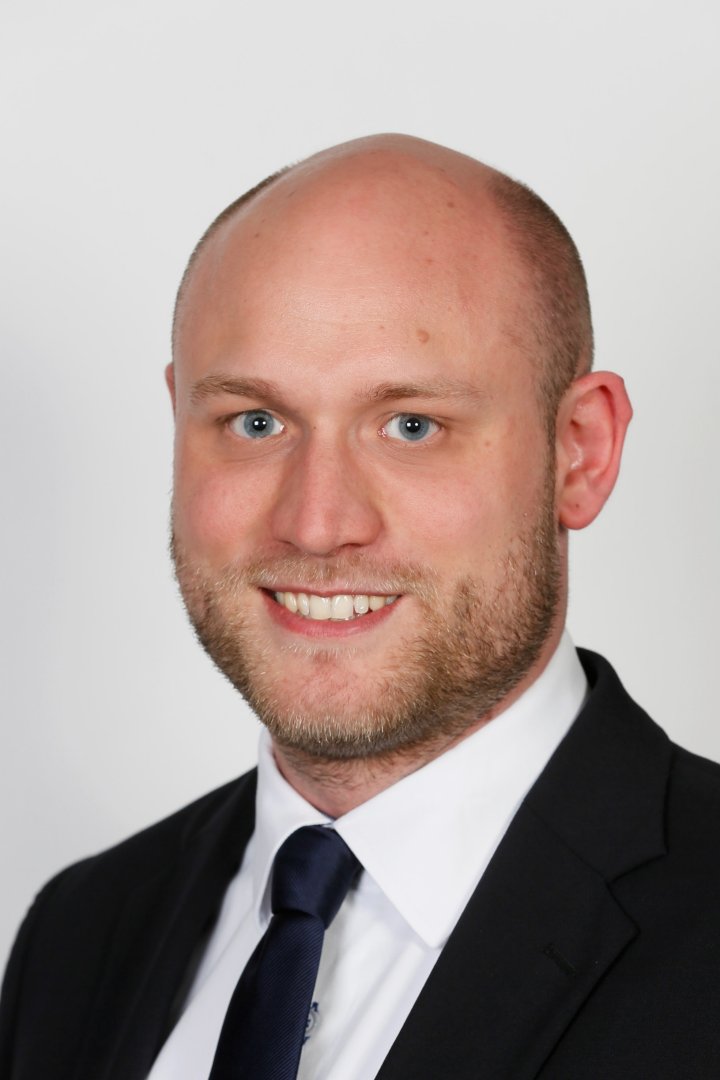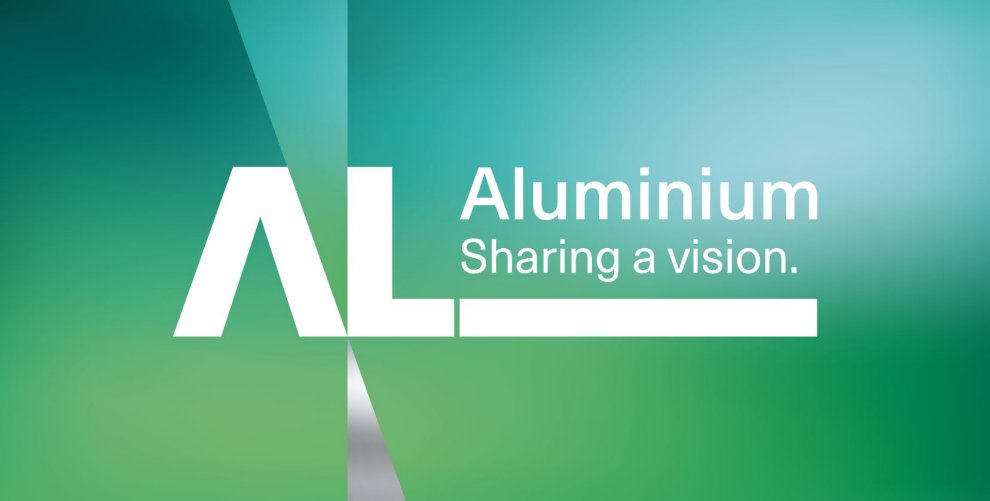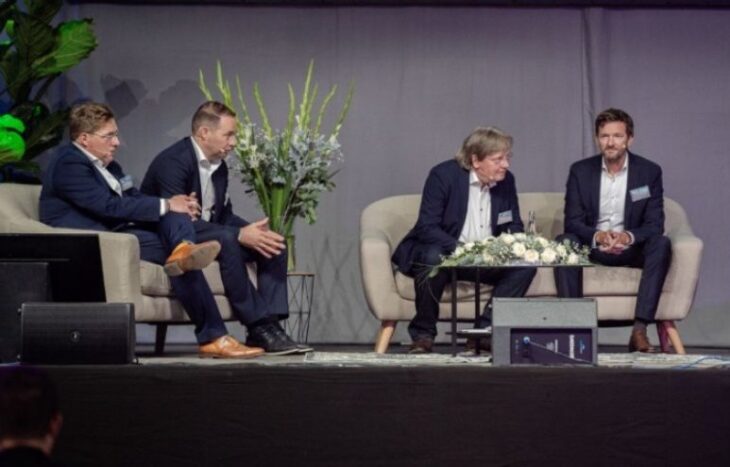At the end of September, the ALUMINIUM Business Summit in Düsseldorf, Germany, premiered as a hybrid event, featuring both in-person and online presentations. Jointly hosted by Aluminium Deutschland, European Aluminium, CRU Group, and the ALUMINIUM trade show (via Reed Exhibitions), the event was conceived to provide a combination of condensed, cutting-edge information and top-class networking.
Over the course of two days, the summit featured 25 industry speakers and presenters, who discussed the current topics of the aluminum industry from various perspectives. Each day around 100 visitors attended the event onsite, while around 30 guests connected via Zoom, representing the entire value chain of the aluminum industry.
Highlights from the Business Summit
Under the motto, “Shaping a new Industrial Era,” the first ALUMINIUM Business Summit focused on the central issues that are likely to occupy the aluminum industry for a long time to come, including discussions of the major upheavals currently confronting the industry. Presentations and discussions addressed vital topics, such as sustainability, new mobility, rapid digitalization, and fundamental shifts in the markets — some of which are highlighted here. Digital versions of all the Business Summit presentations can be accessed via the ALUMINIUM organization’s new Digital Talk format.
Sustainability
Sustainability was a cross-cutting theme throughout most of the two days of the Business Summit. Serge Gaudin, director of Strategy & Sustainability, Novelis Europe, discussed the importance of recycling in achieving a circular economy. He emphasized that the ambitious climate targets (enacted by governments and companies) can only be achieved if the players pull in the same direction across the entire aluminum supply chain.
The panel discussion that followed pointed in the same direction. Discussing the relationship of aluminum to the European Green Deal were Hinrich Mählmann (president, Aluminium Deutschland and general partner, Otto Fuchs), Marius Baader (managing director, Aluminium Deutschland), Marko Gernuks (head of Life Cycle Optimization, Volkswagen), Rob van Gils (CEO & Managing Partner, HAI Group) and Matthias Buchert (head of Resources & Transport Division, Öko-Institut). Under the direction of moderator Emily Whigham — who also led both days of the conference — the panelists sent a clear message: Despite all the differing interests in the details, the Green Deal is a challenge that only the industry as a whole can overcome.
Claudia Bierth, European sustainability manager at Ball Beverage Packaging Europe, reported on the continuous growth that the aluminum can has already achieved as a sustainable circular packaging. At the same time, however, she pointed out the steps still needed to make the collection, separation, and recycling of cans and other packaging part of a true circular economy — clear appeal to the industry.
Additional discussions on sustainability included:
- Ross Strachan, senior analyst, Aluminum, CRU Group, highlighted the impact of the “emissions era” on primary aluminum production, market balance, and trade flows. Specifically, he addressed the obstacles that still stand in the way of increasing recycled aluminum content.
- Daniel Palme, head of Metals, Mining & Adv. Materials, Industrials, Capital Markets at Commerzbank, shed light on capital markets with a view towards sustainability — and specifically on how finance can drive decarbonization.
- Tolga Egrilmezer, vice president Sales & Marketing, Aluminum Rio Tinto, reported on the numerous collaborations his company has already entered into in the spirit of making aluminum the material of choice. One of his main messages was that sustainability is a “team effort.”
Aerospace and Automotive
Blanka Lenczowski, business manager of R&T Development & Partnership Europe at Airbus, provided insight into the aerospace world. She noted that the industry, which has committed itself to reducing its net CO2 emissions down to half of the 2005 level by 2050, is increasingly relying on environmentally friendly, sustainable materials technologies, with a particular focus on the circular economy.
Shifting to automotive, Manuel Kallweit, head of Economic Intelligence & Economics Department, VDA (German Association of the Automotive Industry), spoke about the disruptive changes that the mobility revolution is bringing to the automotive industry. He also noted the increasingly strong role that aluminum should play as a material in the future.
Alois Winkler, who is responsible for the “Responsible Supply Chain Strategy” at Audi brought in the OEM perspective. Among other things, the Bavarian car manufacturer has established a closed-loop for aluminum stamping waste, in which the high-quality scrap is reprocessed into equally high-quality parts without downcycling. “With electromobility, emissions no longer occur predominantly in the use phase – especially not if the cars are powered by green electricity,” said Winkler. “Emissions are therefore shifting into the supply chain. It is therefore clear where the lever should be applied: in a supply chain strategy that is as sustainable and responsible as possible.”
Hélène Wagnies, managing director at Ducker Research Europe, used extensive data to explain how electrification is affecting the use of aluminum in the European and North American automotive industries.
A Bright Future for ALUMINIUM
In view of its successful premiere, the ALUMINIUM Business Summit will continue to accompany the ALUMINIUM trade fair as an additional format — along with other changes, such as a a new focus, new target groups, and a new corporate design.
 “The world around us is permanently changing, so we have to do the same.” said Malte Seifert, product manager for Reed Exhibitions. “On the one hand, ALUMINIUM is and remains the most important industry event in the world for the stakeholders. But at the same time, the desire to further develop the trade fair platform became clear – in order to continue to meet the demands of the growing community and the challenges of the future.”
“The world around us is permanently changing, so we have to do the same.” said Malte Seifert, product manager for Reed Exhibitions. “On the one hand, ALUMINIUM is and remains the most important industry event in the world for the stakeholders. But at the same time, the desire to further develop the trade fair platform became clear – in order to continue to meet the demands of the growing community and the challenges of the future.”
Responses to in-depth stakeholder surveys drove the organization to shift perspective and transform in order to reflect the current industry need. Therefore, the aim is to position ALUMINIUM as the central market platform for the global aluminum industry, providing orientation, delivering information, and serving an exchange of ideas that will support the material as a solution for many of the challenges and application industries of tomorrow.
This transformation includes a new focus on specific topics. Discussions with stakeholders revealed a clear need to prioritize the topics of sustainability and circular economy. After all, aluminum is better suited than almost any other material to make a significant contribution in this regard — and the design of the new ALUMINIUM logo has changed to reflect this theme.

Additional areas of focus will involve the industry’s desire to break down existing barriers in the use of aluminum by OEMs and in various applications. Special concepts and formats will also increasingly address these application industries in order to achieve targeted communication.
In addition to ALUMINUM’s new focus, the organization is also adding and providing new relevant formats. This includes future editions of the ALUMINIUM Business Summit — as well as Digital Talk, a resource that houses keynotes, panel discussions, presentations, and interviews from the past events along with regular updates on industry trends, topics, and insights. The aim is to grow into a 365-day information and debate forum, with content, infotainment, networking, lead generation, and entertainment being provided in various physical and digital platforms.
Seifert noted, “With its new orientation and communication, ALUMINIUM aims to assume the central orientation, information, and exchange function of the global market, and in doing so, together with our exhibitors, industry leaders and our partners, to offer a platform on which the aluminum industry can set the course for the future.”

